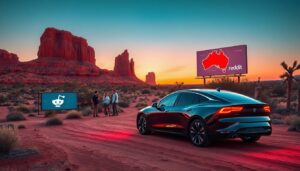Introduction
Electric vehicles (EVs) are booming worldwide, especially in cities looking to cut emissions. Cities see EVs as a way to reduce pollution and traffic problems. But owning an EV isn’t always smooth sailing. Many drivers face issues like not enough charging spots, fear of running out of power, and maintenance worries. Understanding local hurdles helps us find better ways to support EV drivers and craft smarter policies. If we know the roadblocks, we can better plan for a future with cleaner, greener transport.
The Impact of Urban Infrastructure on EV Adoption
Limited Charging Stations in City Centers
City centers often lack enough fast chargers, making it tough for drivers. Imagine waiting hours just to top up your car in busy downtown areas—that’s a common frustration. This causes real headaches for daily commuters and those driving long trips. Take London, for instance. The city has made some progress but still lacks enough quick-charging spots in dense neighborhoods. This discourages many from going electric, thinking it’s too inconvenient.
Urban Parking and Charging Accessibility
Parking lots are often old or poorly designed for EV charging. Finding a spot with a charger can feel like searching for a needle in a haystack. When charging points are hard to access, owners get frustrated and less likely to buy EVs. City planners can fix this by adding charging stations in popular parking areas and designing new lots with charging needs in mind. Better planning means more convenience and more EV owners.
Traffic Congestion and Its Effect on EV Efficiency
Heavy traffic isn’t just a headache—it affects your car’s range too. Stop-and-go driving uses more battery power, which can make your EV run out sooner than expected. To fight this, drivers can try charging during off-peak hours or use smart apps that give real-time traffic updates. These small steps can reduce range worries and make EV ownership easier.
Regional Variations in Electric Vehicle Challenges
Climate-Related Headaches
Extreme cold or heat can hit your EV hard. Cold weather especially can reduce battery life and charging speed. For example, in Norway or parts of Canada, batteries often degrade faster because of freezing temperatures. This makes it harder to keep your car running smoothly in winter, and owners must adapt their driving and charging habits accordingly.
Regulatory and Policy Barriers
Different regions have different rules. Some areas offer generous incentives to buy EVs; others impose restrictions or lack support. This patchwork affects how affordable electric cars are, and how quickly they grow popular. When government offers tax breaks or fast-lane access to EV owners, adoption rises. When policies are absent, buyers tend to hesitate.
Power Grid Limitations
More EVs mean more demand on the local power grid. Many areas already struggle to handle this extra load. Overloaded grids might lead to power outages or higher rates. Upgrading infrastructure with smart meters and decentralized energy storage can help. Governments can support this by funding grid improvements, making sure the system can keep up with EV growth.
Maintenance and Technical Support in Specific Areas
Access to Skilled EV Technicians
Finding trained mechanics for EVs isn’t always easy in small towns or remote areas. Without local expertise, owners worry about repairs or resale value. This lack of support discourages potential buyers from making the switch or keeping their EVs long term.
Availability of Genuine Components
If parts are scarce, fixing your EV can be a long process. Remote areas often have trouble sourcing high-quality components, risking vehicle keeps and reliability. Owners may end up driving less or avoiding repairs altogether.
Innovations in Remote Diagnostics and Support
Modern EVs use telematics to troubleshoot issues remotely. Many manufacturers offer remote diagnostics, which saves owners trips to the shop. For those in areas with limited repair options, these tech features become a lifeline, helping keep cars on the road longer and reducing downtime.
Consumer Experience and Education
Addressing Range Anxiety Through Education
Many drivers worry about their EV running out of juice unexpectedly. Sharing real-world data and owner stories helps dispel fears. Tips like charging overnight or using quick chargers during breaks can stretch your range and boost confidence.
Providing Localized Resources and Support
Municipalities and dealerships can play a big role by offering workshops, maps of charging stations, and roadside assistance tailored for EV owners. Good information builds trust, making potential owners feel more comfortable switching.
Community Engagement and Peer Support
Joining local EV clubs and online forums creates a supportive network. Sharing tips, troubleshooting ideas, and charging recommendations helps owners solve problems faster. For example, many regions have active EV groups that meet regularly—this sense of community makes ownership more satisfying.
Future Trends and Solutions to Headaches
Technological Innovations
Soon, ultra-fast chargers and new battery chemistries will make charging quicker and more reliable. Wireless charging and roadside rapid chargers are on the horizon too. These innovations promise less waiting and more convenience.
Policy and Infrastructure Development
Governments worldwide are investing heavily in expanding charging networks. Public-private partnerships can speed this process, bringing more stations to busy areas. Smart infrastructure plans will support growing EV numbers without overloading existing systems.
Sustainable Solutions for Regional Challenges
Wind and solar energy can power charging stations, making EVs even greener. Using renewable resources reduces emissions and makes electric driving truly sustainable. Additionally, eco-friendly maintenance techniques help preserve the environment while keeping vehicles in top condition.
Conclusion
Driving an electric vehicle in specific areas can come with hurdles, from limited charging spots to climate effects. But with tailored solutions, smarter policies, and tech advances, these problems are fixable. The key is planning for regional needs and supporting drivers through better infrastructure and education. The future holds promise for widespread EV adoption, making our cities cleaner and our roads greener. Embracing these changes will make electric driving easier and more accessible for everyone.




